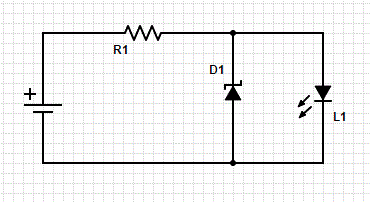There's some basic flaw in my understanding of how LED's or diodes in general work so hope someone can help and forgive the simple question.
So generally when one has an LED in series with a resistor, it seems the LED will always have voltage drop corresponding of around 2V (more exact value can be read from datasheet). This means the voltage drop across the resistor will be the voltage drop of the source minus the 2V, and the resistor should be chosen simply to limit the current to, say, max 20 mA or whatever the datasheet says. But the relevant point here is that the size of the resistor won't impact the distribution of the voltage drops (over the resistor vs the LED). The LED has a "hard-wired" voltage drop and the resistor takes the rest.
So what if we have a different scenario, where a Zener diode is used to convert the voltage. So in this case, I have a Zener and a resistor in series, connected to the power supply. Let's say the Zener diode is 5V. It's connected "reverse" to take advantage of this reverse breakdown voltage. The resistor is such that the max current drawn can be 20 mA for the whole circuit. The circuit is seen here:

The Voltage drop across the Zener should now be 5V (assuming the voltage source has a higher voltage than that) and the resistor limits the current.
Now the question is: What happens if I connect an LED in parallel with the Zener, without any resistor? A resistor shouldn't be necessary for current-limiting purposes since the resistor (in series with the Zener) is already limiting the current so we know there's never be an excess current. But since the LED is in parallel with the Zener, the voltage drop across it will be 5V, i.e. higher than before. So this is different from the case before where the circuit ensured the voltage drop across the LED was 2V. Here it seems it cannot do that, because there is only the LED to take the whole voltage drop.
Will this setup damage the LED? What value should I look for in the datasheet to find out what max voltage drop I can apply when there's no resistor? In the sheet I have for a typical LED, such a voltage is not listed under absolute max ratings. But I suppose I couldn't just put a drop across 1000V even if I assured the current was < 20 mA?
I'm also thinking if the wires will start acting as (small)resistors in series with the LED and somehow take the excess voltage.

